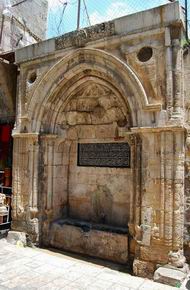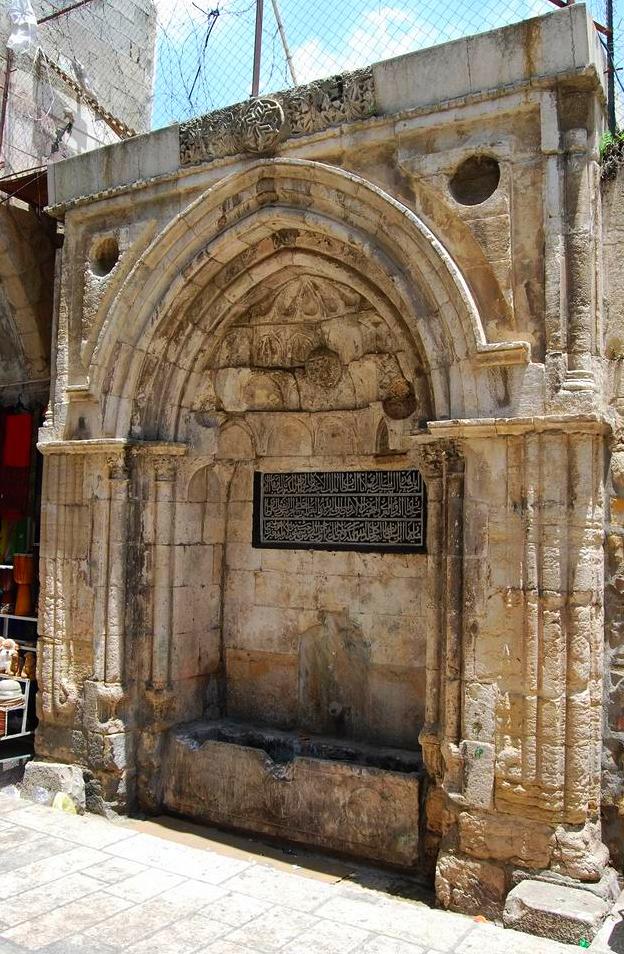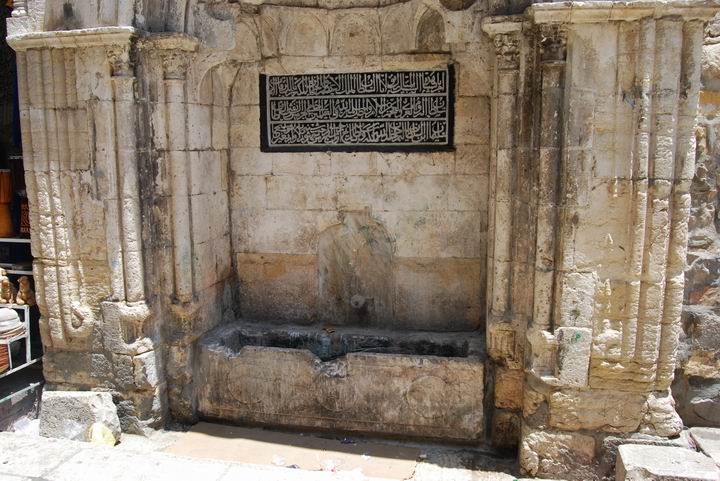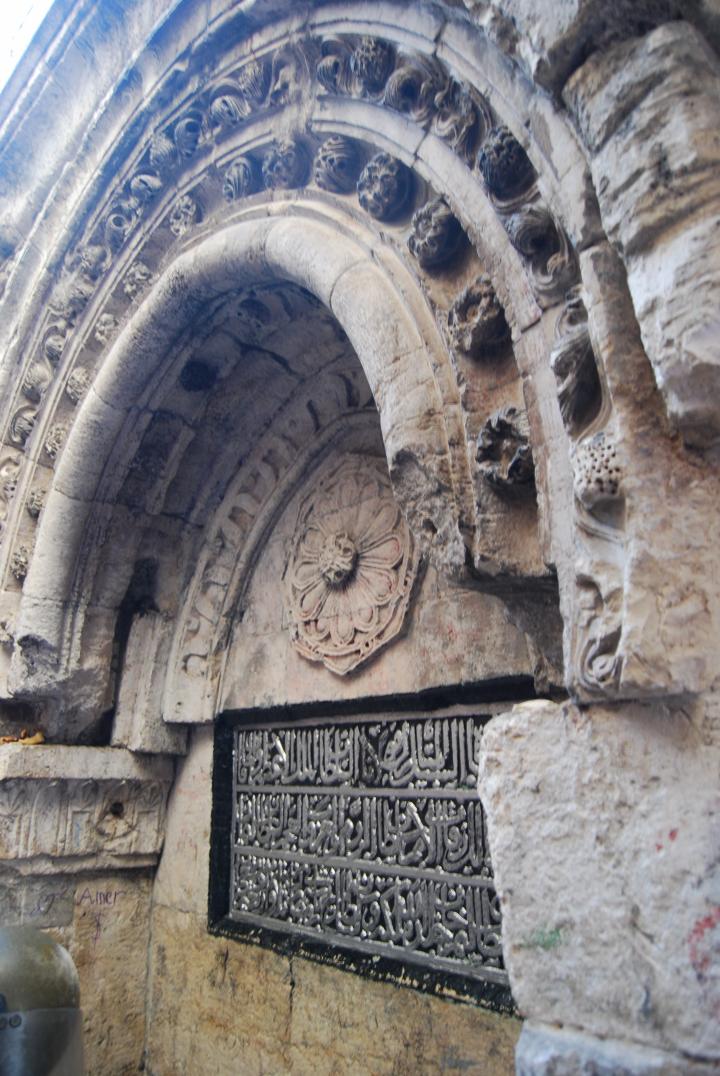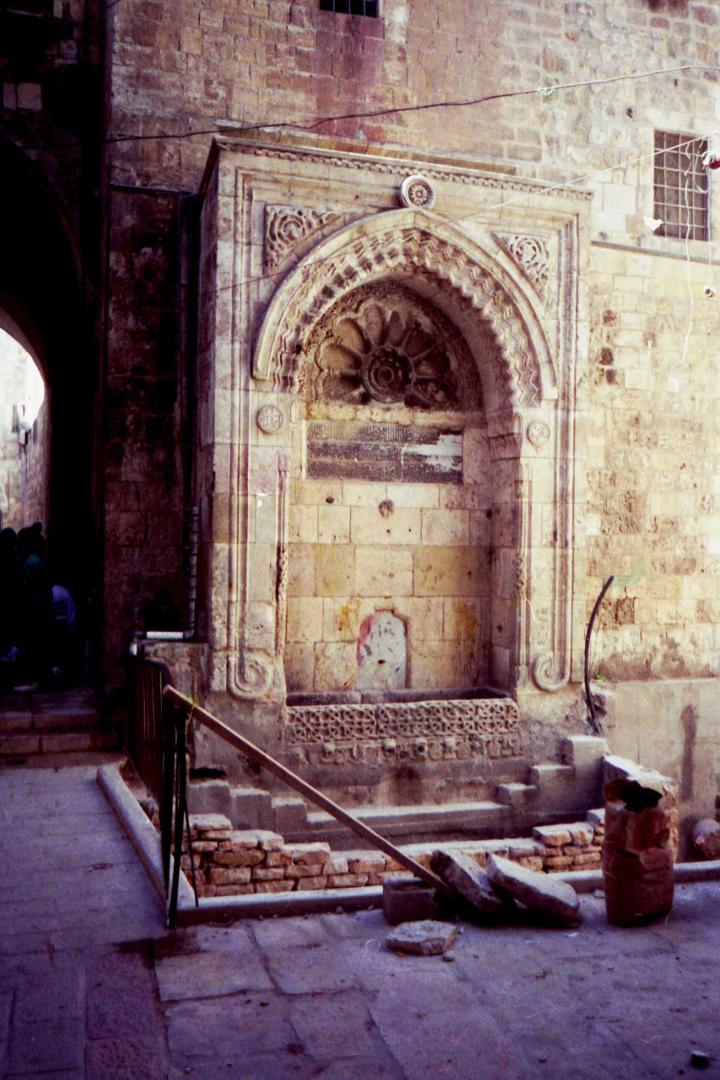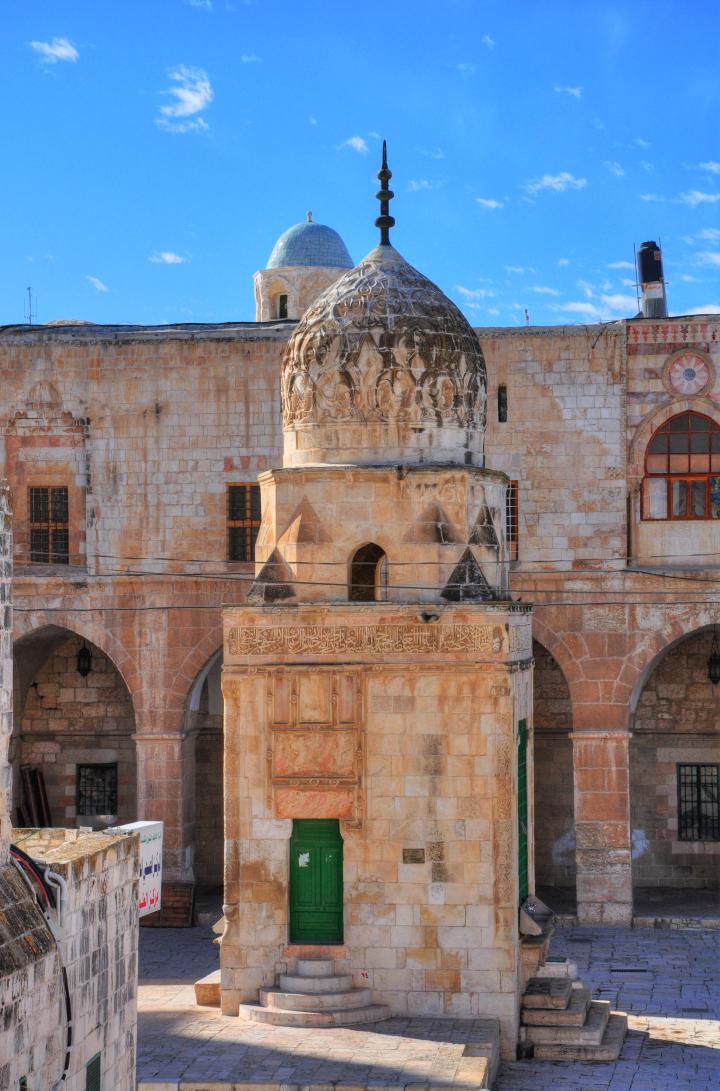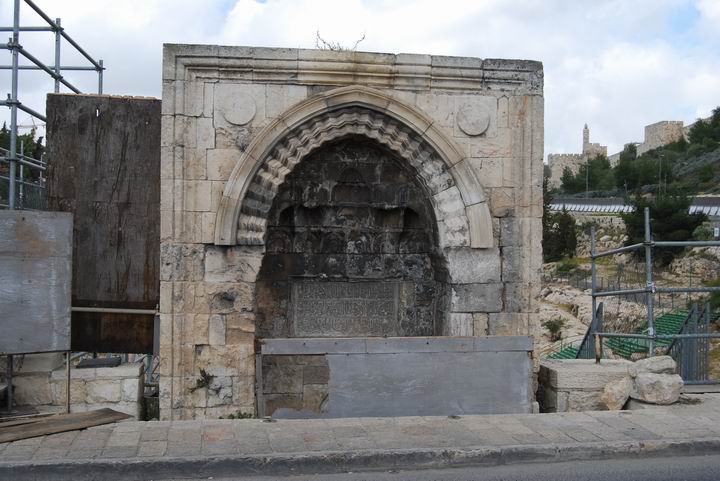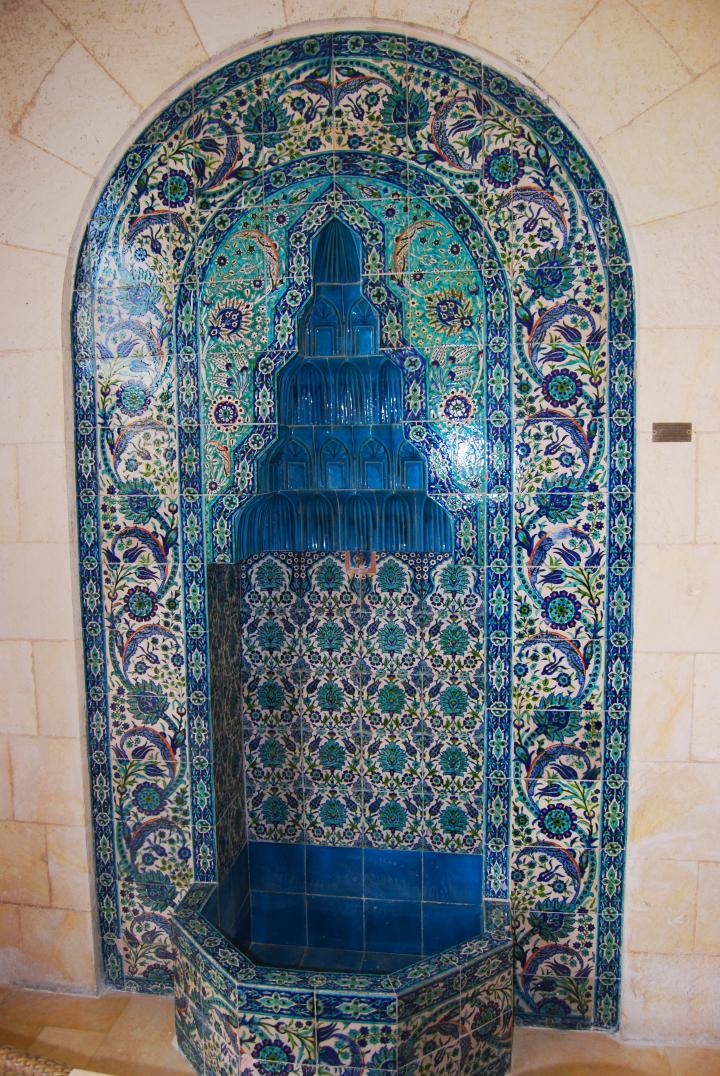Sebil is a Turkish public drinking fountain. There are several such fountains in the city.
Home > Sites > Jerusalem > Sebil (drinking fountain)
Contents:
Overview
History
Location
Photos
* Hagai A
* Hagai B
* Chain Gate
* Sultans pool
* StAndrews
Biblical Refs
Historical Refs
Links
Overview:
A “sebil” is a type of public fountain that is commonly found in the Middle East and North Africa. The term “sebil” comes from the Arabic word “sabil,” which means “path” or “way.” Sebils were traditionally used as places for people to stop and drink water while traveling on the street.
Sebils were often located at busy intersections or near markets and public squares, and they were typically constructed of stone or brick and decorated with intricate carvings and tiles. Some sebils were also equipped with a roof or canopy to provide shade for those using the fountain.
In addition to serving as a source of drinking water, sebils were also used as a symbol of charity and a form of religious or civic devotion. Many sebils were built and maintained by wealthy individuals or religious institutions as a way of providing for the poor and the needy.
Today, sebils can still be found in many Middle Eastern and North African cities, including Cairo, Damascus, and Jerusalem. They remain a popular architectural feature and a symbol of the region’s rich cultural heritage. Some sebils have been restored and preserved as historic sites, and others continue to serve their original purpose as public fountains.
Location:
An aerial view is seen below showing the places of the sebils that are featured in this page.
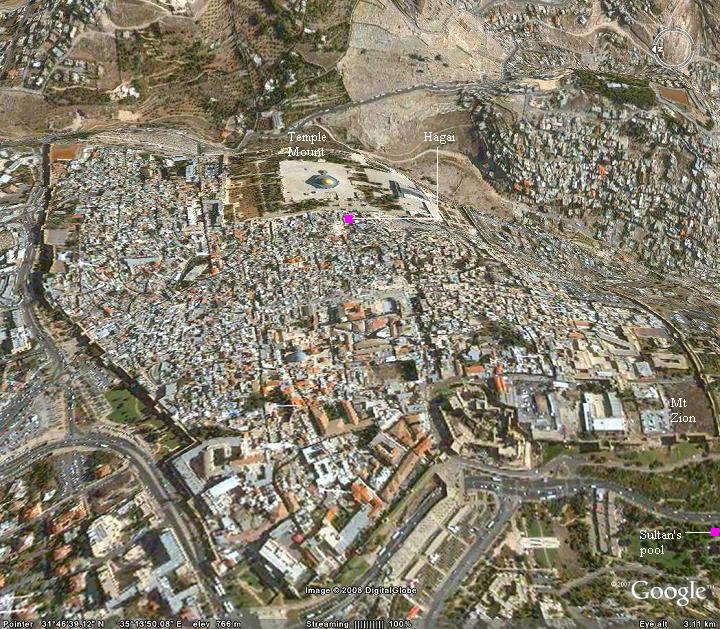
Photos:
(a) Hagai (Al-Wad) Road – “A”:
Along the Hagai (Al-Wad) road, on the western side of the Temple mount, are two Ottoman sebils. The photo below shows one of the Sebils which is closest to the Western Wall.
Click on the photos to view in higher resolution…
A closer detail of the sebil is seen below.
(b) Hagai ( El Wad) Rd – “B”:
Another Sebil is located in Ha-Gai road and the corner of Ala E-Din road, on the entrance to the alley that leads east to the Mashgiach (supervisor) gate.
(c) Silsileh/Shalshelet gate:
Another Sebil lies in the small plaza immediately outside the Gate of the Chain (Silsileh/Shalshelet) of the Temple Mount. This Ottoman structure is dated to 1537 (Muslim year 943), and the inscription praises Sultan Suleiman the Magnificent (reigned 1520-1566), the great builder of Jerusalem. It is distinctive because of the medieval rose window tracery in the upper part and the sunken/excavated area in front. (thanks for Tom powers for his correction)
Photo by Gal Shain
On the other side of the gate, on the temple mount, are additional Sebils. One of these fountains is located just before the Chain gate (30m NE), and named Sebil Kasem Basha. This fountain and its adjacent pool was built by the Governor of Egypt in 1527, and was the first Ottoman public structure built after the Ottomans conquered Jerusalem from the Mamluks. The Octagon shaped structure is caped by a pointed dome. Its lead roof is supported by 8 columns. A 7m x 7m square shallow pool was used for bathing before climbing up the stairs to the shrine of the Dome of Rock.
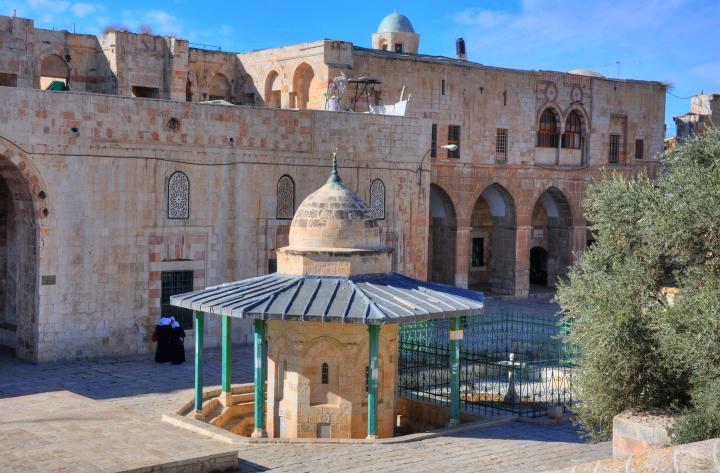
Another Sebil near the Chain gate is the Kaitabai (Qa’it Bay) Sebil. This 13m high structure was constructed in 1455 by the Mamluk Sultan Enal (Al-Ashraf Sayf ad-Din Enal, reigned 1453 – 1461), then repaired in 1482 by the Mamluk Sultan Kait-Bai (Al-Ashraf Sayf al-Din Qa’it Bay, reigned 1468-1496), and was named after him. Under the fountain is an underground reservoir.
(d) Sultan’s pool:
Another sebil is seen outside the walls, on the south-west side of the old city, on the bridge over the Valley of the son-of- Hinnom. The road is called Hebron. The sebil was built by the Ottoman Sultan Suleiman the Magnificent (reigned 1520-1566). This great builder of Jerusalem built additional 4 sebils inside the walls.
The photo below shows the sebil, with the “Sultan’s pool” behind it in the near right side, and the Tower of David and the walls of the old city in the far right background.
The inscription reads: “Instructed us to build here a drinking place, our lord the Sultan, the great King… Sultan Suleiman son of Sultan Selim Khan, Allah will keep his kingdom and government for eternity”.
The water was fed from an aqueduct that supplied water to the temple, and also filled up the reservoir behind the sebil (called “Sultan’s pool“). The aqueduct was based on the Jerusalem “lower aqueduct” that delivered water to the city in the Roman period, from Solomon’s pools (near Bethlehem) to the temple mount (20KM in total length). Its traces are visible on the west side of the pool. The Turks added clay pipes into the ancient rock-hewn aqueduct.
(d) St Andrew’s British period Sebil
A modern sebil was built in 1927 in the Scottish hospital structure (now Jerusalem’s house of quality), near St. Andrew’s church. It is beautifully decorated with blue Armenian ceramic tiles.
Links:
External:
- Turkish inscriptions in Jerusalem (pdf)
- Sultan’s pool and the sebil (Hebrew)
- Water supply in Jerusalem (pdf; Hebrew)
Internal:
- Sultan pool
- Aqueducts
- Temple Mount (plan with indication of sebils)
- Jaffa Sebils
Etymology (behind the name):
- Sebil – a Turkish name for a drinking fountain. It is based on the Arabic name of a “path” , since the Sebil was located near roads. In Hebrew a path is called “Shvil”, which is very similiar.
- Rahat – Hebrew name for Sebil. Biblical reference of Rahat, translated to troughs (Exodus 2 16): “Now the priest of Midian had seven daughters: and they came and drew water, and filled the troughs to water their father’s flock”.
BibleWalks.com – walk with us through the sites of the Holy Land
Redeemer<—previous Jerusalem site–<<< All Sites >>>—next Jerusalem site—>>> St. Anna
![]()
This page was last updated on Feb 11, 2023 (added overview)
Sponsored links:
